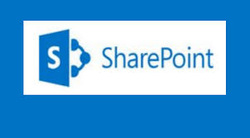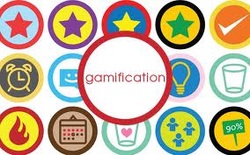
Microsoft SharePoint has become the leading content management system in today's competitive business landscape as organizations look to foster information transparency and collaboration by providing efficient capture, storage, preservation, management, and delivery of content to end users.
A recent study by the Association for Information and Image Management (AIIM) found that 53% of organizations currently utilize SharePoint for ECM. SharePoint's growth can be attributed to its ease of use, incorporation of social collaboration features, as well as its distributed management approach, allowing for self-service. With the growing trends of social collaboration and enhancements found in the latest release of SharePoint 2013, Microsoft continues to facilitate collaboration among knowledge workers.
As SharePoint continues to evolve, it is essential to have a solution in place that would achieve the vision of efficiency and collaboration without compromising on security and compliance. The growing usage of SharePoint for ECM is not without risk. AIIM also estimated that 60% of organizations utilizing SharePoint for ECM have yet to incorporate it into their existing governance and compliance strategies. It is imperative that organizations establish effective information governance strategies to support secure collaboration.
There are two new nice features in SharePoint 2013 version that would help you with compliance issues. E-discovery center is a SharePoint site that allows to get more control of your data. It allows to identify, hold, search, and export documents needed for e-discovery. "In Place Hold" feature allows to preserve documents and put hold on them while users continue working on them. These features are available for both on-premises and in-cloud solutions.
2013 SharePoint has been integrated with Yammer which provides many social features. This presents new challenge with compliance. Yammer is planning to integrate more security in future releases. But for now, organizations need to create policies and procedures for these social features. Roles like "Community Manager", "Yambassadors", "Group Administrators" might be introduced.
There are 3rd party tools that could be used with SharePoint for compliance and information governance. They are: Metalogix and AvePoint for Governance and Compliance, CipherPoint and Stealth Software for Encryption and Security; ViewDo Labs and Good Data for Yammer analytics and compliance.
In order to most effectively utilize SharePoint for content management, there are several best practices that must be incorporated into information governance strategies as part of an effective risk management lifecycle. The goal of any comprehensive governance strategy is to mitigate risk, whether this entails downtime, compliance violation or data loss. In order to do so, an effective governance plan must be established that includes the following components:
Develop a plan. When developing your plan, it is necessary for organizations to understand the types of content SharePoint contains before establishing governance procedures. It is important to involve the appropriate business owners and gather any regulatory requirements. These requirements will help to drive information governance policies for content security, information architecture and lifecycle management.
When determining the best approach to implement and enforce content management and compliance initiatives, chief privacy officers, chief information security officers, compliance managers, records managers, SharePoint administrators, and company executives will all have to work together to establish the most appropriate processes for their organization as well as an action plan for how to execute these processes. During the planning phase, your organization should perform an assessment, set your organization's goals, and establish appropriate compliance and governance requirements based on the results of the assessment to meet the business objectives.
Implement your governance architecture. Once your organization has developed a good understanding of the various content that will be managed through SharePoint, it is time to implement the governance architecture. In this phase, it is important to plan for technical enforcement, monitoring and training for employees that address areas of risk or noncompliance. It is important to note that while SharePoint is known for its content management functionality, there are specific challenges that come with utilizing the platform as a content management system for which your governance architecture must account: content growth and security management.
In order to implement effective content management, organizations should address and plan to manage growth of sites, files, storage, and the overall volume of content. Organizations without a governance strategy often struggle with proliferation of content with no solutions to manage or dispose of it. This is a huge problem with file servers. Over time, file servers grow to the point where they become a bit like the file cabinet collecting dust in the corner of your office. It is easy to add in a new file, but you will not find it later when you need it. The challenge comes from the planning on how to organize and dispose of out-of-date content.
SharePoint offers the technology to address these challenges, but only if it is enabled as part of your governance plan. Information management policies can be used to automatically delete documents, or you may be using third-party solutions to archive documents, libraries and sites. By default in SharePoint 2013, Shredded Storage is enabled to reduce the overall storage of organizations that are utilizing versioning. Remote BLOB Storage (RBS) can also be enabled in SharePoint or through third-party tools to reduce SharePoint's storage burden on SQL Server.
Tagging and classification plays a key role in information governance. Proper classification can improve content findability. Organizations can utilize SharePoint's extensive document management and classification features, including Content Types and Managed Metadata to tag and classify content. Third-party tools that extend SharePoint's native capabilities can also filter for specified content when applying management policies for storage, deletion, archiving, or preservation. Ultimately, however, the people in your organization will play the biggest role here. As such, your plan should identify who the key data owners are and the areas for which they are responsible. This role is often filled by a "site librarian" or those responsible for risk management in the enterprise.
In order to minimize risk to the organization, it is imperative to ensure information is accessible to the people that should have it, and protected from the people that should not have access. SharePoint has very flexible system of permissions that can accommodate this issue.
Ongoing assessments. In order to ensure that established governance procedures continue to meet your business requirements ongoing assessment is required. Conduct ongoing testing of business solutions, monitoring of system response times, service availability and user activity, as well as assessments to ensure that you have complied with your guidelines and requirements for properly managing the content. The content is essentially your intellectual property, the lifeblood that sustains your organization.
React and revise as necessary. In order to continue to mitigate risk, respond to evolving requirements, and harden security and access controls, we must take information gathered in your ongoing assessments and use that to make more intelligent management decisions. Continue to assess and react and revise as necessary. With each change, continue to validate that your system meets necessary requirements.
The risk has never been higher, especially as more data is created along an growing regulatory compliance mandates requiring organizations to ensure that its content is properly managed.
If you develop a plan, implement a governance architecture that supports that plan, assess the architecture on an ongoing basis, and react and revise as necessary, your organization will have the support and agility necessary to truly use all of the content it possesses to improve business processes, innovation, and competitiveness while lowering total costs.


 RSS Feed
RSS Feed
